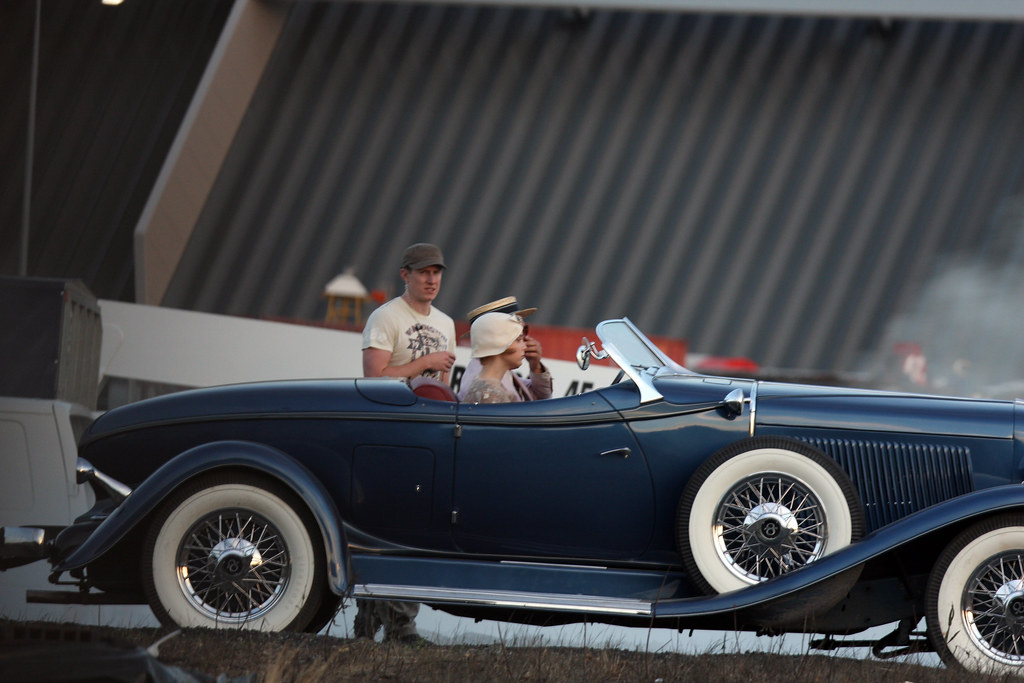
When you conjure images of the 1920s, what truly comes to mind? For many, it’s that unmistakable sense of luxury and unparalleled swagger that characterized a truly transformative era. Thanks to legendary classics, much like those immortalized in works such as The Great Gatsby, automobiles of this period transcended mere transportation, becoming potent symbols of success and elevated status. They were flashy, undeniably bold, and unapologetically stylish, epitomizing the very essence of the Roaring Twenties, a decade marked by dramatic social and economic shifts across North America and parts of Europe.
The economic might and high employment rates within the United States during this time fueled an unprecedented consumer spree, encouraging Americans to indulge more extravagantly in entertainment and leisure. As war veterans returned home, seeking comfort and relaxation, the automobile transitioned from a mere luxury to a fundamental component of everyday life. This shift ignited a profound desire for Hollywood-style living, one filled with indulgence and ease, and the car became a primary source of freedom, adventure, and travel, fundamentally altering living standards, social patterns, and urban planning itself.
Indeed, the 1920s stand as a pivotal decade in automotive history, a period that saw cars evolve from horse-drawn predecessors into sophisticated, motorized marvels, seamlessly blending audacious style with practical function, and unprecedented luxury with burgeoning affordability. We’re about to embark on a captivating journey, taking a closer look at some of the most iconic vehicles that not only roared through this vibrant era but also indelibly shaped the future of driving, leaving an enduring legacy for collectors and enthusiasts alike. Prepare to discover what made these machines truly stand out.
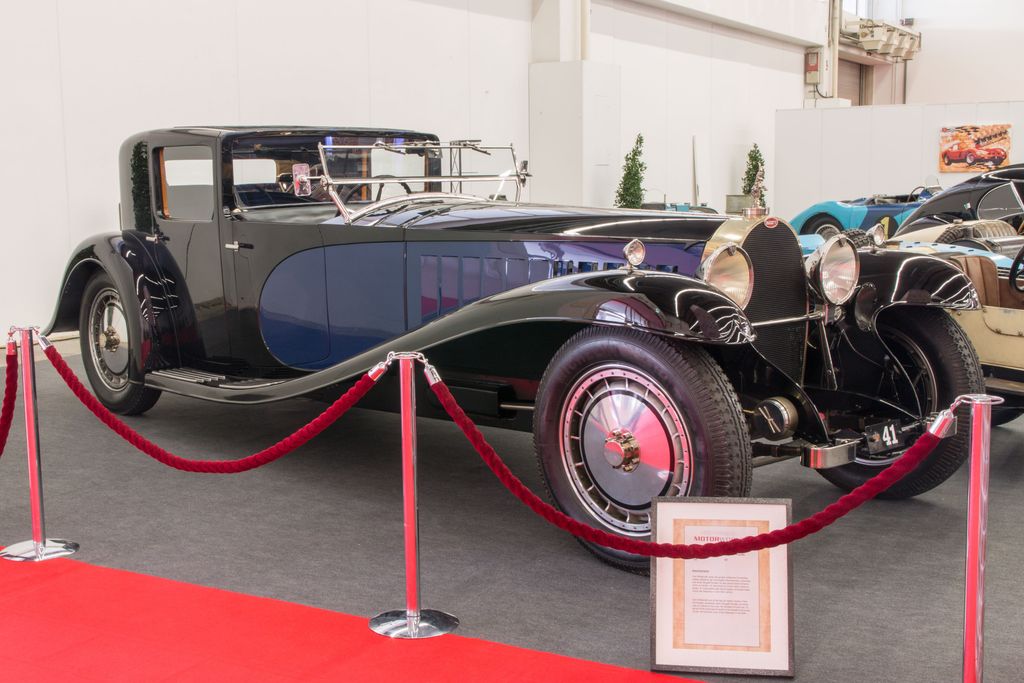
1. **Bugatti Type 41 (Royale)**Unveiled in 1927, Ettore Bugatti’s Type 41, famously known as the Royale, emerged as a machine unlike anything the world had ever witnessed. Bugatti, already a premier car company in the 1920s, designed the Royale to be the largest and most exquisitely luxurious car available, quite literally intended for kings, queens, and emperors. Its very conception is steeped in legend, said to have come about after Ettore Bugatti took personal exception to an unknown English lady’s unfavorable comparison of his cars to those of his competitor, Rolls-Royce.
Despite its grand ambitions, the Royale unfortunately became a very, very expensive commercial mistake. At a basic chassis price of $30,000, even the royal clientele it was designed for found it an inaccessible extravagance, particularly as the global economic crisis began to take hold. Bugatti had initially intended to build 25 of these luxury vehicles, but ultimately, only seven were ever completed, including a single prototype. This stark reality underscores the car’s magnificent but ultimately impractical vision in a turbulent economic landscape.
The Type 41 was a true behemoth, stretching over six meters long and weighing around 3.5 tonnes, depending on its specific bodywork. Powering this magnificent machine was a mammoth 12.8-litre engine, derived from Ettore’s ingenious idea to use half of a 16-cylinder plane engine, originally slated for a French military deal that never materialized. Distinctively, it was the only Bugatti ever adorned with a hood ornament – a graceful dancing elephant, thoughtfully designed by Ettore’s brother, Rembrandt. While the prototype met its unfortunate end in an accident in 1931, the original six remain, with two housed in France, one owned by Volkswagen AG (current owners of the Bugatti brand), one at the Henry Ford Museum, and the remaining two held in unknown private collections. Should one ever appear for sale, this “king of luxury 1920s cars” would undoubtedly shatter records, likely becoming the most expensive second-hand car ever sold at auction, far eclipsing the 1962 Ferrari 250 GTO.
Car Model Information: 2024 Hyundai PALISADE Calligraphy Night Edition
Name: Bugatti Type 41
Caption: Coupé Napoléon
Manufacturer: Bugatti
Aka: Bugatti Royale
Production: 1927–1933
Class: Luxury car
BodyStyle: Berline, coupé, cabriolet, roadster, brougham, coupé de ville
Layout: Front-engine, rear-wheel-drive
Engine: 12763 cc
Abbr: on
Transmission: Manual transmission
Wheelbase: 4.3 m
Length: 6.4 m
Width: 2.1 m
Weight: 3175 kg
Categories: 1930s cars, All articles needing additional references, All articles with vague or ambiguous time, Articles needing additional references from December 2019, Articles with short description
Summary: The Bugatti Type 41, better known as the Royale, is a large ultra-luxury car built by Bugatti from 1927 to 1933, With a 4.3 m (169.3 in) wheelbase and 6.4 m (21 ft) overall length, it weighs approximately 3,175 kg (7,000 lb) and uses a 12.763 litre (778 cu in) straight-eight engine. For comparison, against the Rolls-Royce Phantom VII (produced from 2003 to 2017), the Royale is about 20% longer, and more than 25% heavier. This makes the Royale one of the largest cars in the world. With a production run of just seven vehicles, it is both one of the rarest and most expensive.
Ettore Bugatti planned to build twenty-five of these cars and sell them to royalty as the most luxurious car ever, but the Great Depression undermined his effort: only three of the seven made were sold; six still exist, with one wrecked in a crash. Unused engines were installed in newly constructed high-speed railcars for the French National Railway (SNCF).
Get more information about: Bugatti Royale
Buying a high-performing used car >>>
Brand: Bugatti Model: Type 41
Price: $39,658 Mileage: 22,633 mi.
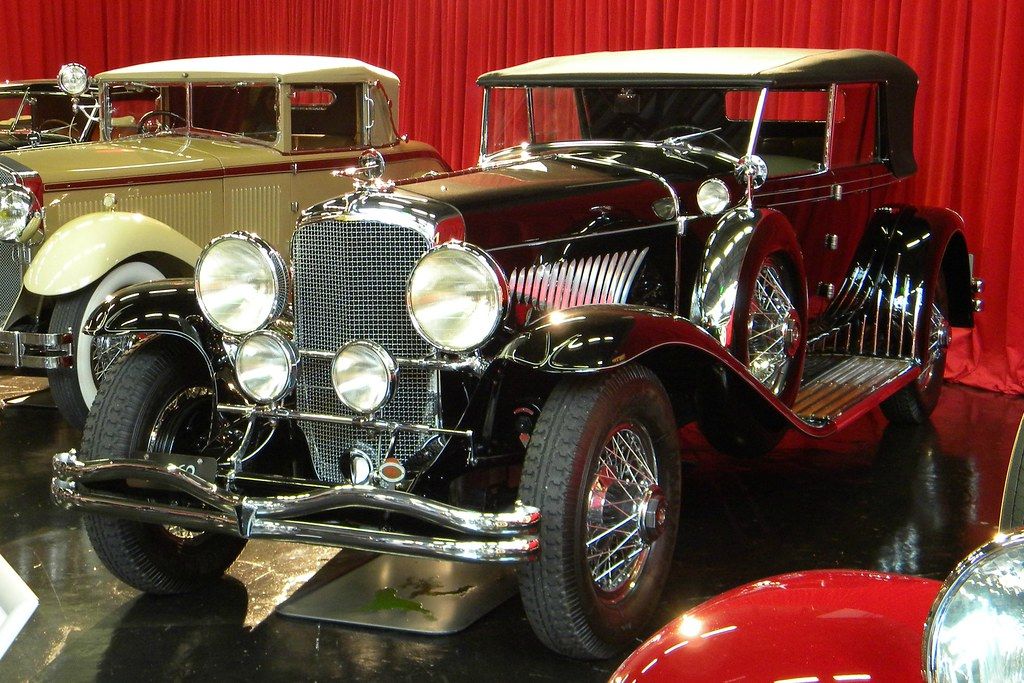
2. **Duesenberg Model J**Arguably the most iconic car of the 1920s, the Duesenberg Model J magnificently embodied everything that was grand and aspirational about the Roaring Twenties. Introduced in 1928, this automotive masterpiece was the vision of two extraordinary men, Frederick and August Duesenberg, who set out with the ambitious goal of constructing the finest automobile the world had ever witnessed. And by all accounts, they unequivocally succeeded in their monumental endeavor.
At its heart, the Model J was powered by a straight-eight engine that produced an astounding 265 horsepower—a truly revolutionary figure for its time, positioning it as one of the most powerful production cars globally. Its performance was nothing short of breathtaking; it could accelerate from 0 to 60 mph in a mere 10 seconds, a “lightning speed” in an era where many cars struggled to even reach 50 mph. This incredible power combined with unmatched elegance made it a dominant force on the road.
Beyond its sheer performance, the Model J was a testament to unparalleled craftsmanship. Each vehicle was meticulously custom-built to the owner’s precise specifications, offering a canvas for bespoke body designs tailored by Duesenberg’s in-house coachbuilders. Whether the client desired a sleek roadster, an opulent town car, or a sporty convertible, every detail was executed with meticulous attention. The interiors boasted luxurious leather, polished wood trim, and gleaming chrome accents that shimmered like fine jewels, solidifying its status as the ultimate definition of sophistication for the ultra-wealthy. Its allure was such that Hollywood icons like Clark Gable, political figures such as J.P. Morgan, and industrial giants like Errett Lobban Cord (the visionary behind the brand) all counted themselves among its famous owners. The Model J’s memorable appearance in ‘The Great Gatsby’ further cemented its indelible place in pop culture as the quintessential symbol of success and lavish excess during America’s most vibrant decade.
Car Model Information: 2024 Hyundai PALISADE Calligraphy Night Edition
Name: Sfn
Caption: 1930 Duesenberg J Murphy Torpedo Convertible
Manufacturer: Duesenberg
Aka: Duesenberg J,Duesenberg SJ (supercharged),Duesenberg SSJ (short-wheelbase supercharged)
Production: 1928–1937,481 produced (445 Model J, 36 Model SJ)
Assembly: Indianapolis,Indiana,United States
Designer: Gordon Buehrig
Class: Full-size car,Luxury vehicle
BodyStyle: Coachbuilt to owner’s preference
Layout: Front-engine, rear-wheel-drive layout#Front mid-engine, rear-wheel-drive layout
Engine: 420 cuin
Abbr: on
Disp: Sfn
Transmission: Manual transmission
Wheelbase: {{convert,142.5,in,mm,1,abbr=on,disp=flip
Predecessor: Duesenberg Model A
Sp: us
Categories: 1930s cars, All articles with unsourced statements, Articles with short description, Articles with unsourced statements from December 2013, Articles with unsourced statements from June 2012
Summary: The Duesenberg Model J is a luxury automobile made by Duesenberg exclusively in 1928 and offered for ten subsequent years. Intended to compete with the most luxurious and powerful cars in the world, it was introduced in 1928, the year before the stock market crash that led to the Great Depression. Duesenberg Motors Company went bankrupt in 1937.
Get more information about: Duesenberg Model J
Buying a high-performing used car >>>
Brand: Duesenberg Model: Model J
Price: $39,658 Mileage: 22,633 mi.
Read more about: The 17 Most Expensive Classic Cars Ever Sold
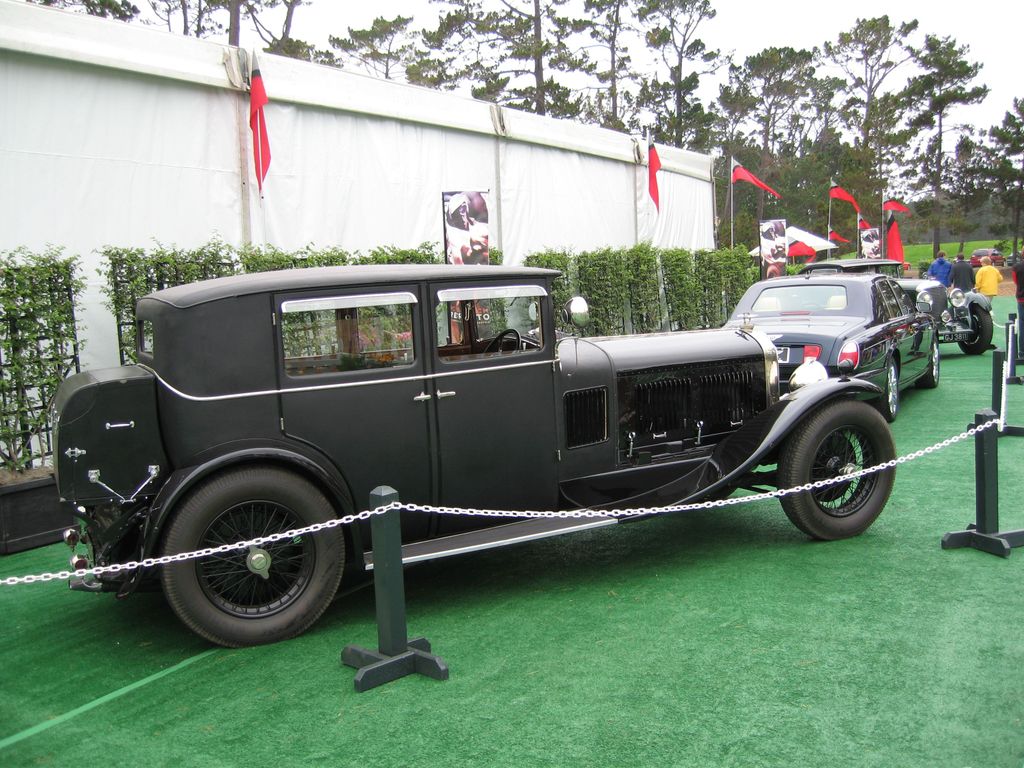
3. **Bentley Speed Six Blue Train**The Bentley Speed Six Blue Train is not just a car; it’s a legend born from a daring challenge in 1930 that captured the imagination of the era. The car’s remarkable story began when Bentley’s owner, Woolf Barnato, was presented with a formidable challenge by a French magazine: to beat the luxury Blue Train’s speed from London all the way to the glamorous French Riviera. It was a bold race against both time and a formidable locomotive, a true test of automotive endurance and speed.
Barnato and his dedicated team enthusiastically embraced this audacious challenge, and the outcome was nothing short of spectacular. He claimed victory with flying colors, a triumph that not only proved the Speed Six’s exceptional capabilities but also irrevocably cemented its legendary place in automotive history. This dramatic victory showcased the raw power and engineering prowess that defined Bentley’s approach to car manufacturing during the 1920s.
Underneath its elegant exterior, the Bentley Speed Six was an absolute powerhouse, far from a slouch in terms of performance. It proudly boasted a commanding 6.5-liter inline-six engine, capable of churning out an impressive 200 horsepower—a truly remarkable figure for its time. This considerable power, combined with a meticulously engineered, lightweight, and racing-inspired chassis, transformed the Speed Six into a formidable machine. It was designed to conquer both the demands of long-distance road journeys and the exhilaration of high-speed runs, ensuring its dominance in an age that celebrated speed and mechanical excellence.
Car Model Information: 2024 Hyundai PALISADE Calligraphy Night Edition
Name: Bentley 6½ Litre & Speed Six
Caption: Speed Six Mulliner drophead coupé 1930
Manufacturer: Bentley Motors Limited
Production: Sfn
Assembly: Cricklewood
Class: Chassis#Vehicles
BodyStyle: as arranged with coachbuilder by customer
Layout: Front-engine, rear-wheel-drive layout
Successor: Bentley 8 Litre
Engine: straight-6
Designer: Walter Owen Bentley
Wheelbase: 132 in
Abbr: Sfn
Categories: 1930s cars, 24 Hours of Le Mans race cars, All articles with unsourced statements, Articles with short description, Articles with unsourced statements from April 2012
Summary: The Bentley 6½ Litre and the high-performance Bentley Speed Six were rolling chassis produced by Bentley from 1926 to 1930. The Speed Six, introduced in 1928, became the most successful racing Bentley.
Two Bentley Speed Sixes chassis became known as the Blue Train Bentleys after their owner Woolf Barnato in March 1930 “raced” the French Blue Train which departed Cannes at 17:45 and, after a stop in Paris, was scheduled to arrive in Calais at 15:24 when Barnato already was in his club in London.
Get more information about: Bentley Speed Six
Buying a high-performing used car >>>
Brand: Bentley Model: Speed Six
Price: $39,658 Mileage: 22,633 mi.
Read more about: The Golden Age of Chrome and Power: 15 Iconic American Cars That Defined the 1950s
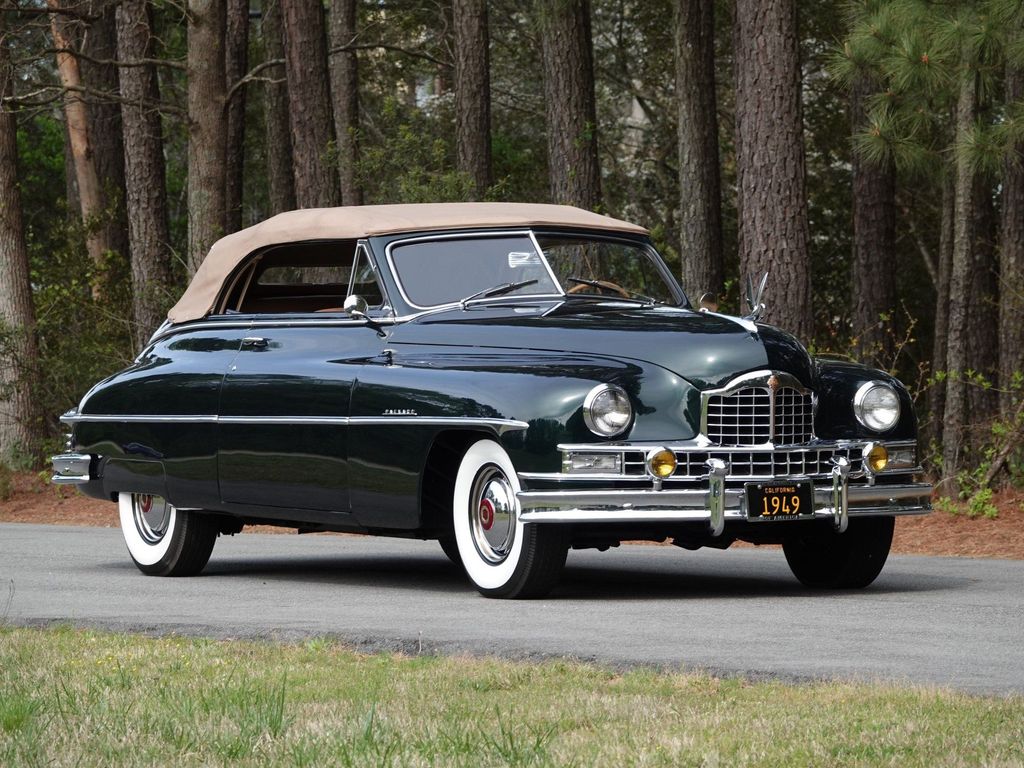
4. **Packard Twin Six**The Packard Twin Six holds a truly special and revered position in automotive history, distinguished as one of the very first production cars to feature a revolutionary V12 engine. This groundbreaking development established an entirely new benchmark for both luxury and uncompromising performance, forever altering the landscape of high-end automobile manufacturing. The very heart of the Twin Six was its magnificent engine—a 60-degree, 12-cylinder powerhouse that generated a respectable 84 horsepower. This represented a substantial leap forward from the conventional 4- or 6-cylinder engines that predominantly characterized the automotive market of the period, setting it apart from its contemporaries.
The V12 configuration gifted the Twin Six with a profoundly smoother and more refined driving experience, characterized by significantly less vibration and a remarkably quieter engine operation compared to its competitors. This sophisticated refinement was a key factor that allowed it to truly stand out in an increasingly crowded luxury car market, appealing to those who prioritized comfort and a serene ride. However, refined performance was just one facet of what made the Packard Twin Six exceptional.
The car also rapidly earned an unparalleled reputation for its steadfast reliability, a trait that would quickly become a defining hallmark of the esteemed Packard brand. Discerning buyers, particularly those situated within the upper echelons of society, deeply valued the assurance that they could depend on their Packard for both daily practical use and for their more leisurely, grand excursions. This combination of groundbreaking engineering, luxurious comfort, and unwavering dependability made the Packard Twin Six a truly coveted possession and a symbol of automotive excellence in the dynamic 1920s.
Car Model Information: 2024 Hyundai PALISADE Calligraphy Night Edition
Name: Packard Twelve
Caption: 1934 Packard Eleventh Series Twelve (1108) Dietrich Convertible Victoria
Manufacturer: Packard
ModelYears: 1916–1923,1933–1939
Assembly: Packard Automotive Plant,Detroit,Michigan,United States
Layout: Front-engine, rear-wheel-drive layout
Related: Packard Super Eight
Engine: {{convert,424.1,CID,L,1,abbr=on,V12 engine
Abbr: on (1933-1934)
BodyStyle: coupé,Convertible (car),Sedan (automobile)
Wheelbase: {{convert,125,-,135,in,mm,0,abbr=on
Predecessor: Packard Six
Successor: Packard Custom Super Eight
Categories: Articles with short description, Cars discontinued in 1939, Cars introduced in 1916, Cars introduced in 1933, Commons category link from Wikidata
Summary: The Packard Twelve was a range of V12-engined luxury automobiles built by the Packard Motor Car Company in Detroit, Michigan. The car was built from model year 1916 until 1923, then it returned 1933 until 1939. As a sign of changing times, the majority of second generation Packard Twelves received standard bodywork, with custom bodywork gradually losing favor. Many of the custom cars were actually only “semi-customs”, with Dietrich assembling Packard-made bodies with special touches.
Get more information about: Packard Twelve
Buying a high-performing used car >>>
Brand: Packard Model: Twin Six
Price: $39,658 Mileage: 22,633 mi.
Read more about: Timeless Automotive Icons: 10 Cars From the 1940s That Still Command Attention Today
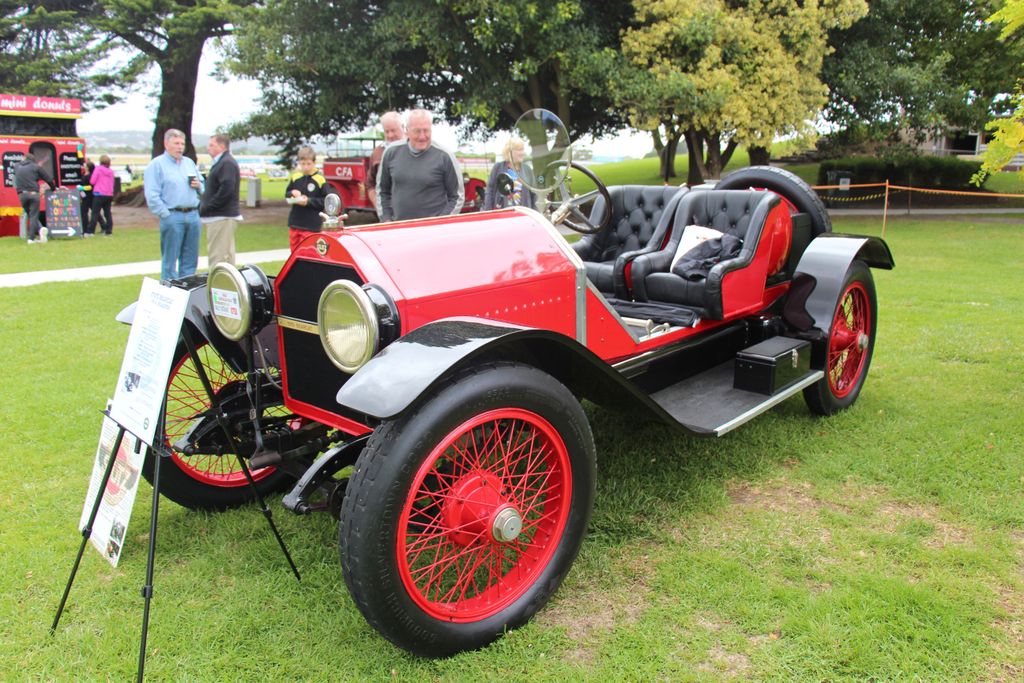
5. **Stutz Bearcat**The Stutz Bearcat roared onto the American automotive scene as America’s bold and emphatic answer to the burgeoning popularity of European sports cars, but with an unmistakable attitude that was uniquely its own. Its low, wide frame immediately declared its purpose, screaming, “I’m built for the road,” making it, by many accounts, one of the most iconic and visually arresting cars of the vibrant roaring ’20s. This was not a car designed for subtle luxury; it was a pure statement of aggressive minimalism.
Forget the intricate chrome details and elaborate woodwork that adorned many luxury cars of the era; the Bearcat was lean, mean, and purposeful. It was a true beast that left no doubt about its intentions, exuding an undeniable sense of raw power and unbridled spirit. Every curve, every line etched onto its body, was thoughtfully and purposefully designed to slice through the air, transforming every drive into an absolute joy. Its design was a masterclass in functional aesthetics, prioritizing performance and dynamic presence.
Under the hood, the Bearcat housed a potent inline-8 engine, capable of pushing out over 80 horsepower—a remarkably solid figure for the time. What truly set it apart was its lightweight construction, which meant it wasn’t merely fast in a straight line; its agility and handling were exceptional. Tight corners and sharp turns were met with unwavering stability, as the Bearcat seemed to “glue” itself to the road, offering an exhilarating and confidence-inspiring driving experience. While one might initially associate the Bearcat exclusively with professional racers, it quickly found a prominent place in the garages of the well-heeled. The wealthy clientele of the time sought more than just a car that enhanced their appearance; they craved a vehicle imbued with true grit and spirit, and the Stutz Bearcat delivered both in spades.
Read more about: From Model T to Rolls-Royce: 18 Cars That Made the 1920s Roar
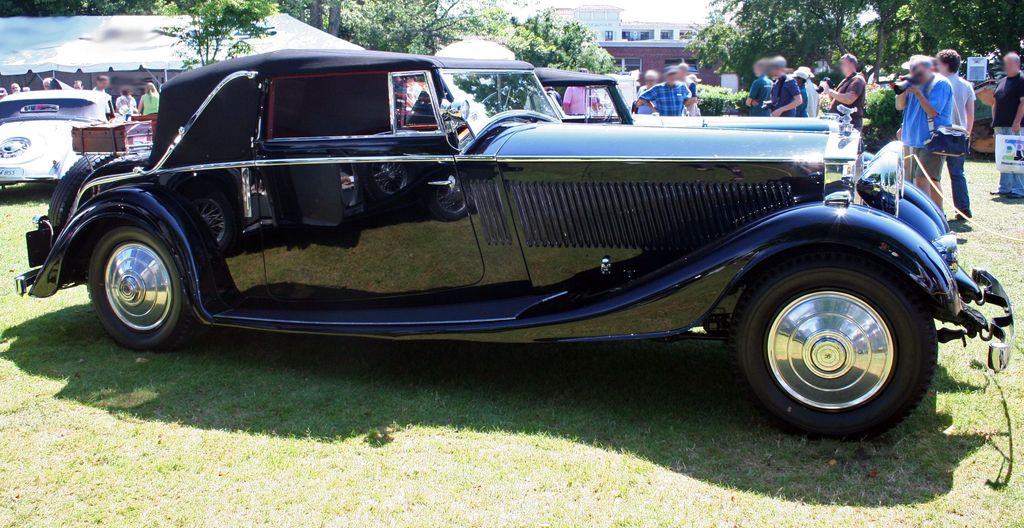
6. **Rolls-Royce Phantom I**Introduced in 1925 as the distinguished successor to the highly regarded Silver Ghost, the Rolls-Royce Phantom I truly embodied elegance and refinement on a magnificent, grand scale. This vehicle was not merely a mode of transport; it was a statement of unparalleled luxury and engineering prowess, designed for those who demanded the absolute pinnacle of automotive excellence. Powering this majestic machine was a 7.7-liter inline-six engine, meticulously engineered to deliver exceptionally smooth acceleration coupled with minimal operational noise. This commitment to a serene and powerful ride ensured a driving experience unlike any other.
One of the most remarkable aspects of the Phantom I was its bespoke nature. Customers had the unique opportunity to commission custom bodies from renowned coachbuilders, meaning that no two cars were ever truly identical. This level of personalization underscored the vehicle’s exclusivity and further elevated its status as a highly coveted item among the elite. It was a common sight outside upscale hotels or private estates, favored unequivocally by the wealthy and influential, serving as an unmistakable symbol of their refined tastes and immense affluence during a period of vibrant growth.
Beyond its remarkably quiet ride and impeccably polished engineering, the Rolls-Royce Phantom I stood as a powerful representation of refined luxury during the vibrant era of the 1920s. Its discerning owners deeply appreciated the meticulous attention paid to every facet of comfort and intricate detail, from the plush interiors to the flawless finish. Even today, many of these magnificent vehicles have been lovingly restored and continue to draw large, admiring crowds at prestigious classic car shows, serving as enduring testaments to their iconic design, powerful engine, and timeless status as symbols of prestige and wealth.
Car Model Information: 2024 Hyundai PALISADE Calligraphy Night Edition
Name: Rolls-Royce New Phantom
Caption: 1929 Rolls Royce Phantom Ascot Tourer
Manufacturer: Rolls-Royce Limited
Aka: 40/50 Phantom,Phantom I
Production: 2,269 at Derby,1,243 at Springfield
Assembly: Derby
Class: Luxury vehicle
BodyStyle: sedan (car)
Layout: FR layout
Engine: 7668 cc
Abbr: Straight-six engine
Transmission: manual transmission
Wheelbase: ubl
Predecessor: Rolls-Royce Silver Ghost
Successor: Rolls-Royce Phantom II
Categories: 1930s cars, All articles with unsourced statements, All articles with vague or ambiguous time, Articles with short description, Articles with unsourced statements from March 2012
Summary: The Rolls-Royce Phantom was Rolls-Royce’s replacement for the original Silver Ghost. Introduced as the New Phantom in 1925, the Phantom had a larger engine than the Silver Ghost and used pushrod-operated overhead valves instead of the Silver Ghost’s side valves.
The Phantom was built in Derby, England, and Springfield, Massachusetts, in the United States. There were several differences in specification between the English and American Phantoms.
The Phantom was replaced by the Phantom II in 1929. The designation Phantom I was never used by Rolls-Royce; it is a construct of enthusiasts applied to help distinguish it from other generations with the same model name.
Get more information about: Rolls-Royce Phantom I
Buying a high-performing used car >>>
Brand: Rolls-Royce Model: Phantom I
Price: $39,658 Mileage: 22,633 mi.
Read more about: Nicolas Cage’s Mind-Blowing Car Collection: A Deep Dive into His Legendary Garage of Rarity and Raw Power
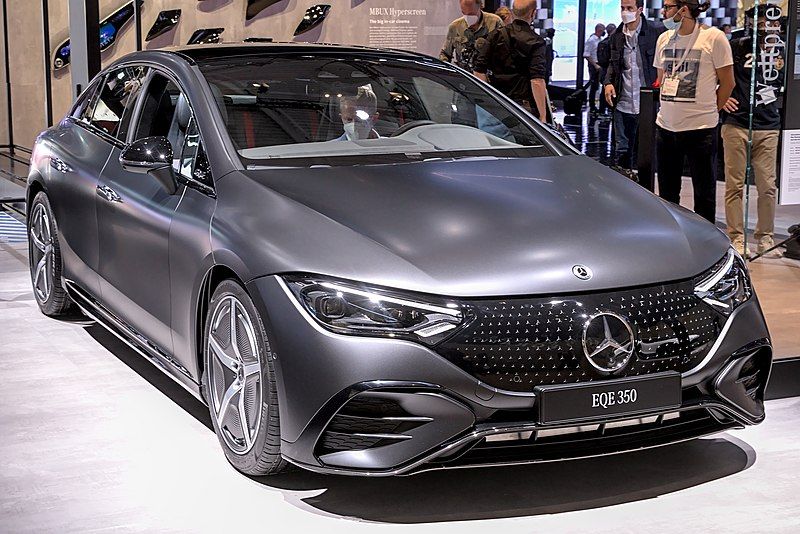
7. **Mercedes-Benz Model S**Released with considerable anticipation in 1927, the Mercedes-Benz Model S boldly thrust high performance directly into the burgeoning luxury market, establishing a new paradigm for what an opulent automobile could achieve. At its core, this extraordinary machine featured a supercharged six-cylinder engine, a technological marvel for its time, which enabled it to reach impressive top speeds with effortless grace. Its distinctive design, characterized by a long, sweeping hood and a low, aggressive profile, instantly set it apart, making it one of the most visually striking and dynamically imposing cars of its era.
The Model S was more than just a luxurious touring car; it was a performance icon that unequivocally set the tone for future high-performance models from the revered Mercedes-Benz brand. Its capabilities were not confined to leisurely drives; it was extensively utilized in demanding European road races, where it consistently earned widespread praise for its outstanding performance and inherent capability. This racing pedigree further solidified its reputation as a machine built for speed and endurance, crafted with precision and power.
Wealthy buyers who yearned for a combination of blistering speed and undeniable elegance naturally gravitated towards the Model S. Its allure was irresistible to those who sought to make a powerful statement both on the road and in society. Due to its specialized nature and high-end positioning, production numbers for the Model S remained intentionally low, a factor that only adds to its immense rarity and desirability among collectors today. Designed by the legendary Ferdinand Porsche himself, the Mercedes-Benz Model S continues to stand out as one of the pivotal achievements in the early, foundational history of Mercedes-Benz, a true testament to German engineering brilliance and forward-thinking design.
The previous section captivated us with the titans of luxury and performance, machines that roared with unapologetic grandeur and set new benchmarks for opulence. But the 1920s automotive story is far richer than just the grandest marques. It’s also a tale of remarkable innovation that brought motoring within reach of more people, transforming daily life and reshaping society itself. The true revolution wasn’t just in raw power or dazzling bespoke coachwork; it was in making the automobile a common, indispensable fixture, a vehicle for everyday adventures and newfound freedoms.
Now, we’ll shift gears and delve into seven more unforgettable cars that truly democratized driving, advanced automotive engineering, and became integral to the daily rhythm of the dynamic 1920s. These vehicles, from the pioneering workhorses that put families on wheels to the sophisticated innovators that brought new levels of comfort and capability to the middle class, each left an indelible mark. They represent the vibrant spirit of progress and the relentless pursuit of making life on the road more accessible, efficient, and enjoyable for a wider audience.
Car Model Information: 2024 Hyundai PALISADE Calligraphy Night Edition
Name: Mercedes-Benz S-Class
Manufacturer: ubl
Production: 1954–present (S-Class nomenclature adopted since 1972)
Class: Full-size luxury car
BodyStyle: Sedan (car)
Related: Mercedes-Benz CL-Class,Mercedes-Benz CLS-Class,Mercedes-Benz SL-Class
Predecessor: Mercedes-Benz W187
Categories: 1980s cars, 1990s cars, 2000s cars, 2010s cars, 2020s cars
Summary: The Mercedes-Benz S-Class, formerly known as “special class” (German: “Sonderklasse”, abbreviated as “S-Klasse”), is a series of full-sized luxury sedans and coupés produced by the German automaker Mercedes-Benz. The S-Class is the designation for top-of-the-line Mercedes-Benz models and was officially introduced in 1972 with the W116, and has remained in use ever since. The S-Class is the flagship vehicle for Mercedes-Benz, being positioned above the other Mercedes-Benz models.
The S-Class has debuted many of the company’s latest innovations, including drivetrain technologies, interior features, and safety systems (such as the first seatbelt pretensioners). The S-Class has ranked as the world’s best-selling luxury sedan. In automotive terms, Sonderklasse refers to “a specially outfitted car.” Although used colloquially for decades, following its official application in 1972, six generations of officially named S-Klasse sedans have been produced.
In 1981, the two-door, four-seat S-Class, designated as SEC, was introduced, sharing the petrol V8 engines with its four-door version, W126. After the introduction of a new nomenclature scheme, SEC was simply renamed as S-Class Coupé. For the 1996 model year, the coupé was separated from the S-Class line and named as new CL-Class (in line with other two-door models: CLK, SL, and SLK); however, the CL-Class was reintegrated into the S-Class model line (same with CLK becoming E-Class Coupé and Cabriolet). The first-ever S-Class convertible since 1972, internally named A217, was introduced and became a one-generation model only. After the end of W222 production in 2020, the successors to the C217 coupé and A217 convertible are not planned, citing the low demand for those models and stronger demand for SUV models.
Get more information about: Mercedes-Benz S-Class
Buying a high-performing used car >>>
Brand: Mercedes-Benz Model: Model S
Price: $39,658 Mileage: 22,633 mi.
Read more about: The Unstoppable Rise: 13 ’90s Icons That Are Now Automotive Goldmines – A Deep Dive into Their Explosive Value
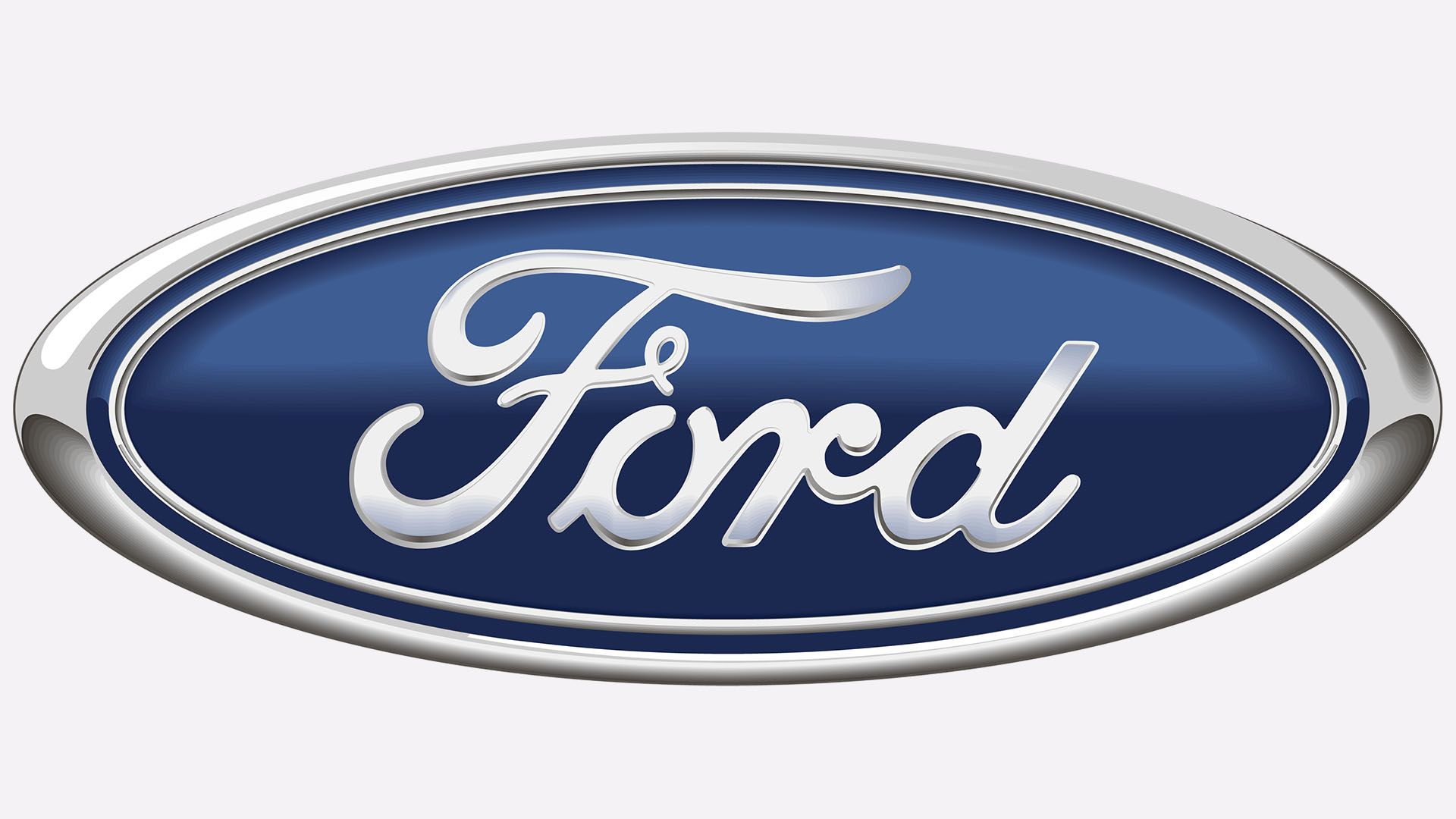
8. **Ford Model T (1920-1927)**Affectionately known as the “Tin Lizzie,” the Ford Model T was far more than just a car; it was a societal catalyst that quite literally “put America on wheels.” Carrying forward the immense success it had already garnered in the preceding decade, the Model T remained a common and influential sight throughout much of the 1920s. Its widespread impact stemmed not from blistering performance—its 2.9-liter four-cylinder engine produced modest power, allowing top speeds near 45 miles per hour—but from its unparalleled accessibility.
Henry Ford’s revolutionary assembly line production methods kept the price of the Model T remarkably low, making it one of the most widely owned and practical cars of the entire decade. For countless families, this dependable, easy-to-operate, and simple-to-maintain vehicle marked their very first foray into automobile ownership. From bustling city roads to the quiet solitude of country farms, the Model T seamlessly integrated itself into the fabric of daily American life, symbolizing independence and convenience. Its influence was so profound that even after production ceased in 1927 to pave the way for newer designs, its legacy as the car that democratized motoring remained undeniable.
Car Model Information: 2024 Hyundai PALISADE Calligraphy Night Edition
Caption: 1925 Ford Model T Touring Car
Manufacturer: Ford Motor Company
Production: October 1908 – May 1927
Assembly: collapsible list
Designer: Childe Harold Wills
Class: Economy car
BodyStyle: collapsible list
Layout: FMR layout
Engine: straight-4
Transmission: planetary gear
Wheelbase: 100.0 in
Abbr: on (1912 roadster)
Length: 134 in
Width: 1676 mm
Height: 1860 mm
Weight: convert
Predecessor: Ford Model N
Successor: Ford Model A (1927–1931)
Categories: 1900s cars, 1908 establishments in the United States, 1910s cars, 1920s cars, All articles needing additional references
Summary: The Ford Model T is an automobile that was produced by the Ford Motor Company from October 1, 1908, to May 26, 1927. It is generally regarded as the first mass-affordable automobile, which made car travel available to middle-class Americans. The relatively low price was partly the result of Ford’s efficient fabrication, including assembly line production instead of individual handcrafting. The savings from mass production allowed the price to decline from $780 in 1910 (equivalent to $26,322 in 2024) to $290 in 1924 ($5,321 in 2024 dollars). It was mainly designed by three engineers, Joseph A. Galamb (the main engineer), Eugene Farkas, and Childe Harold Wills. The Model T was colloquially known as the “Tin Lizzie”.
The Ford Model T was named the most influential car of the 20th century in the 1999 Car of the Century competition, ahead of the BMC Mini, Citroën DS, and Volkswagen Beetle. Ford’s Model T was successful not only because it provided inexpensive transportation on a massive scale, but also because the car signified innovation for the rising middle class and became a powerful symbol of the United States’ age of modernization. With over 15 million sold, it was the most sold car in history before being surpassed by the Volkswagen Beetle in 1972.
Get more information about: Ford Model T
Buying a high-performing used car >>>
Brand: Ford Model: Model T
Price: $39,658 Mileage: 22,633 mi.
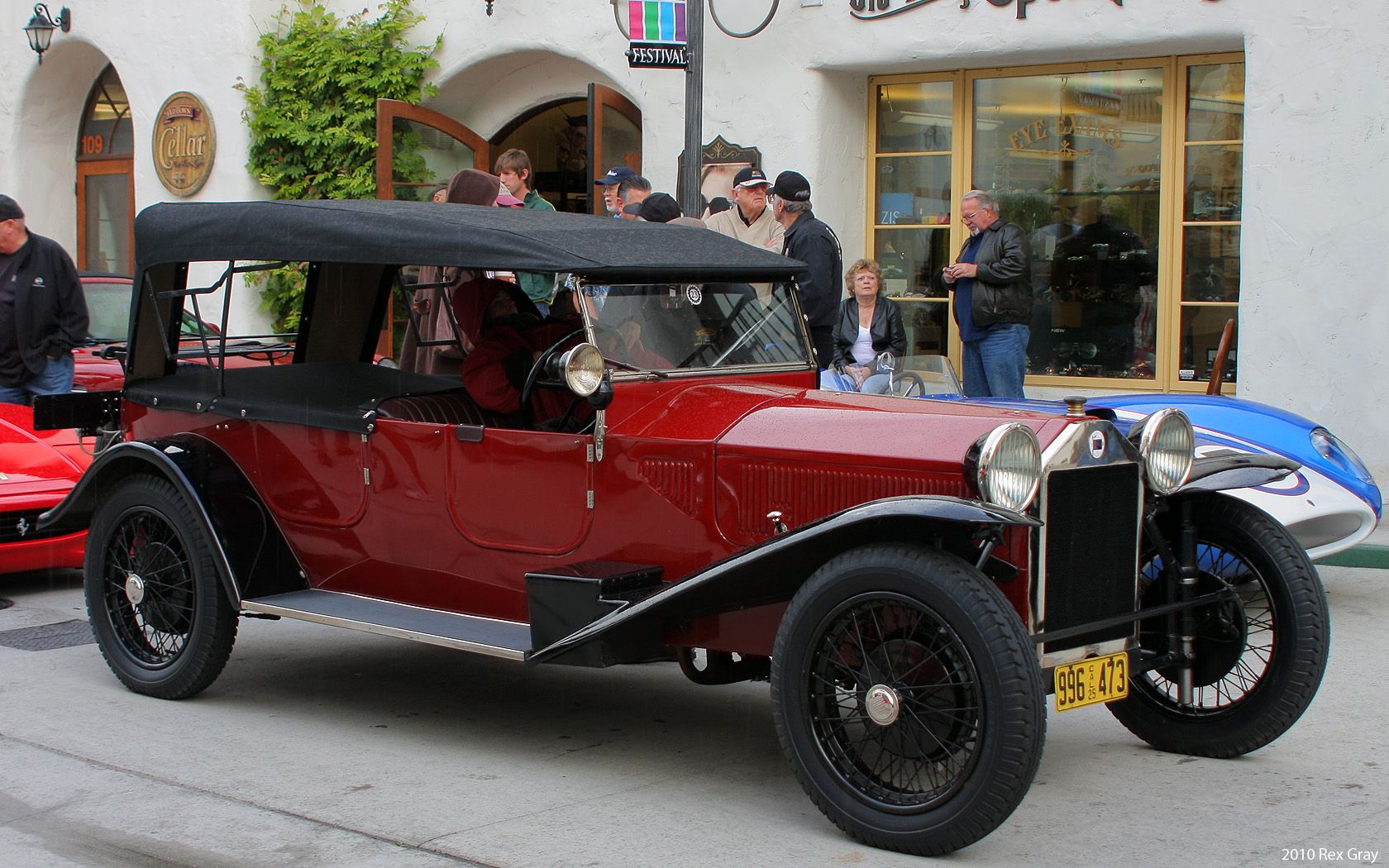
9. **Lancia Lambda (1924)**While some manufacturers focused on brute force or sheer luxury, the Lancia Lambda, first unveiled in 1924, embarked on a different, equally revolutionary path: engineering innovation. This car was genuinely groundbreaking for its era, introducing technical features that would go on to shape automotive design for decades. Most notably, it pioneered the first widespread use of a monocoque chassis—a unitary body construction that significantly improved rigidity and safety—and independent front suspension in a production car.
These advanced engineering principles granted the Lambda a superior ride quality and remarkable handling, setting it apart from its contemporaries. Its quiet operation and refined performance belied its practical elegance, making it a favorite among discerning drivers who valued sophisticated mechanics as much as outward appearance. The Lancia Lambda wasn’t just a car; it was a rolling testament to forward-thinking design and mechanical brilliance, influencing future car designs by demonstrating the profound advantages of a well-engineered, integrated structure, truly marking a pivotal moment in automotive evolution.
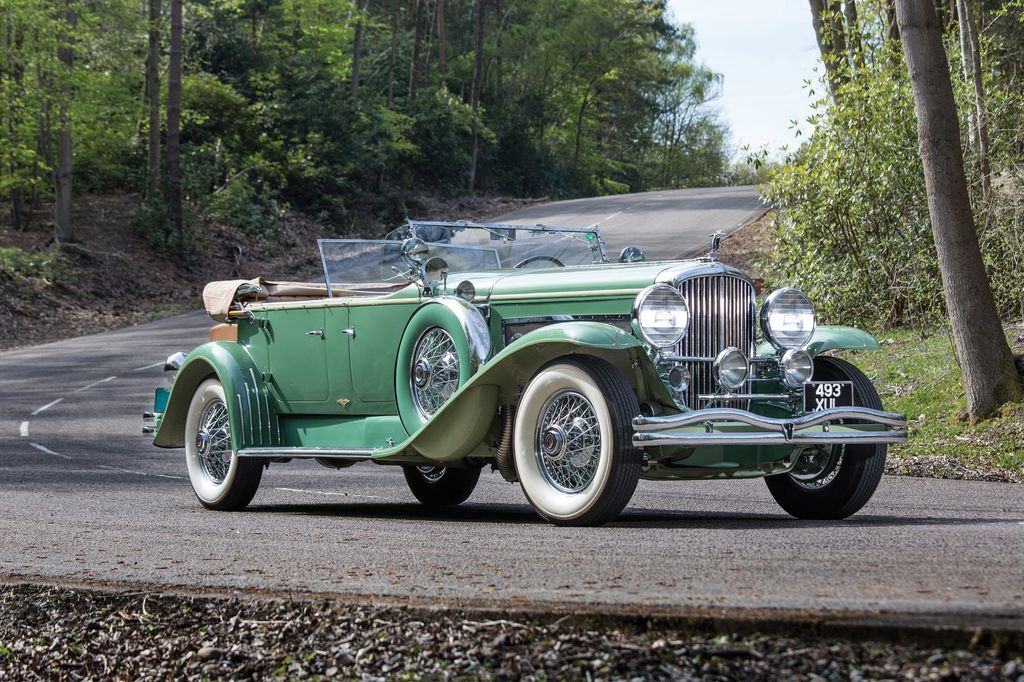
10. **Duesenberg Model A (1921-1926)**Before the flamboyant Model J captured the world’s imagination as the epitome of Twenties grandeur, the Duesenberg Model A laid the crucial groundwork for the brand’s legendary reputation. Arriving in 1921, the Model A immediately impressed with a suite of technical features that were remarkably advanced for its time, showcasing Duesenberg’s unwavering commitment to quality and performance from its very inception. It was one of the first production cars to feature a straight-eight engine, offering a smooth and powerful experience, and, crucially, it incorporated hydraulic brakes—a safety innovation not yet widely adopted across the industry.
Though production numbers for the Model A remained relatively low, its sophisticated engineering and strong, distinctive look helped Duesenberg shape its burgeoning reputation for excellence. It was specifically marketed towards discerning wealthy drivers who sought something demonstrably superior and technically advanced beyond the average luxury offering. The Model A’s influence helped Duesenberg earn profound respect long before the Model J achieved household name status, serving as a powerful foundation upon which an automotive dynasty was built, highlighting the era’s accelerating pace of technological advancement.
Car Model Information: 2024 Hyundai PALISADE Calligraphy Night Edition
Name: Sfn
Caption: 1930 Duesenberg J Murphy Torpedo Convertible
Manufacturer: Duesenberg
Aka: Duesenberg J,Duesenberg SJ (supercharged),Duesenberg SSJ (short-wheelbase supercharged)
Production: 1928–1937,481 produced (445 Model J, 36 Model SJ)
Assembly: Indianapolis,Indiana,United States
Designer: Gordon Buehrig
Class: Full-size car,Luxury vehicle
BodyStyle: Coachbuilt to owner’s preference
Layout: Front-engine, rear-wheel-drive layout#Front mid-engine, rear-wheel-drive layout
Engine: 420 cuin
Abbr: on
Disp: Sfn
Transmission: Manual transmission
Wheelbase: {{convert,142.5,in,mm,1,abbr=on,disp=flip
Predecessor: Duesenberg Model A
Sp: us
Categories: 1930s cars, All articles with unsourced statements, Articles with short description, Articles with unsourced statements from December 2013, Articles with unsourced statements from June 2012
Summary: The Duesenberg Model J is a luxury automobile made by Duesenberg exclusively in 1928 and offered for ten subsequent years. Intended to compete with the most luxurious and powerful cars in the world, it was introduced in 1928, the year before the stock market crash that led to the Great Depression. Duesenberg Motors Company went bankrupt in 1937.
Get more information about: Duesenberg Model J
Buying a high-performing used car >>>
Brand: Duesenberg Model: Model A
Price: $39,658 Mileage: 22,633 mi.
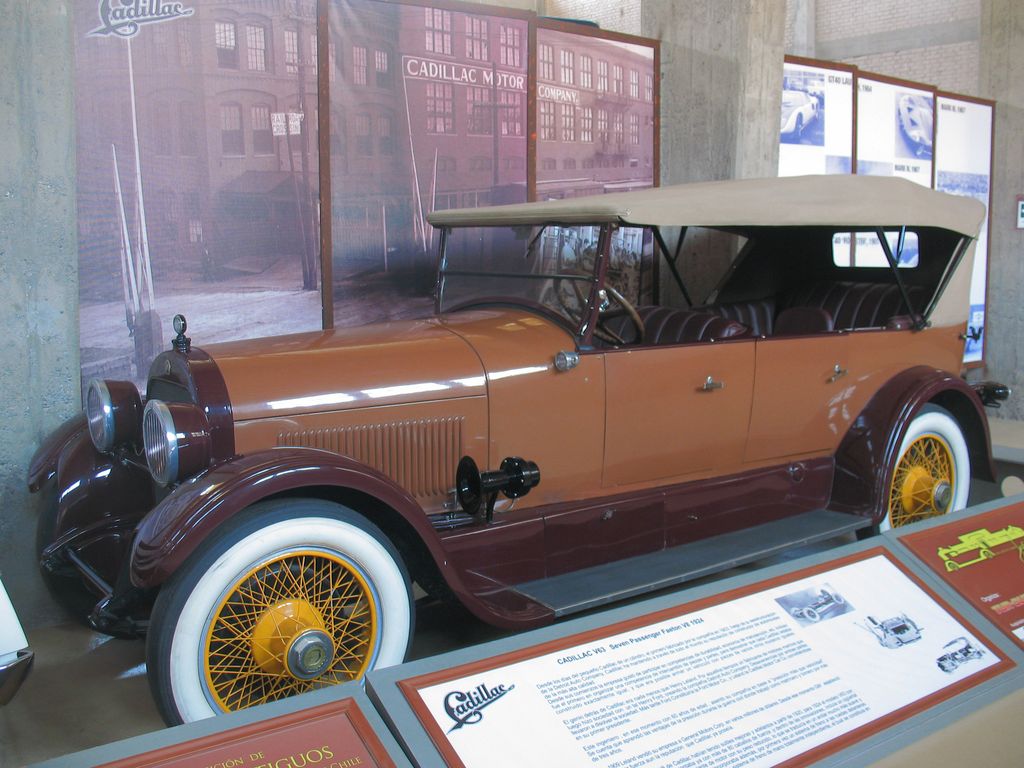
11. **Cadillac Type V-63 (1924-1927)**In the mid-1920s, Cadillac, already a recognized luxury brand, introduced the Type V-63 with a clear ambition: to offer an even better ride and more accessible power to a broader segment of the affluent market. This model came equipped with a robust V8 engine, delivering not only smooth acceleration but also remarkably quiet operation, attributes that made it particularly appealing to upper-middle-class drivers seeking refinement without the ultimate extravagance of bespoke machines. The V-63 also notably featured balanced brakes, a critical enhancement that significantly improved overall handling and safety, further elevating the driving experience.
Cadillac’s strategic goal with the Type V-63 was to firmly maintain its prestigious position as a luxury brand while proactively staying ahead of burgeoning competition. Available in a diverse range of body styles, from elegant coupes to practical touring sedans, it provided buyers with abundant choices, catering to varied tastes and practical needs. Its consistent performance and sharp, contemporary design ensured that Cadillac remained a trusted and desirable name throughout the decade. Even today, collectors actively seek out original or meticulously restored examples of the V-63, recognizing its enduring significance in shaping mainstream luxury motoring.
Car Model Information: 2024 Hyundai PALISADE Calligraphy Night Edition
Name: Cadillac V-63
Caption: 1927 Cadillac Series 314 Sedan
Manufacturer: Cadillac
ModelYears: 1924–1930
Assembly: Detroit Assembly,Detroit
Class: Luxury vehicle
Layout: Front-engine, rear-wheel-drive layout
Platform: General Motors C platform (RWD)
Engine: 314 cuin
Abbr: on
Transmission: synchromesh,manual transmission
Wheelbase: 132 in
Predecessor: Cadillac Type 51
Successor: Cadillac Series 355
Categories: Articles with short description, Cadillac vehicles, Commons category link from Wikidata, Short description is different from Wikidata
Summary: The Cadillac V-63 is a large luxury automobile that was introduced in September 1923 by Cadillac as a 1924 model, replacing the previous Type 61. It used the GM C platform and was replaced by the Cadillac Series 355 in 1931. It retained the name Cadillac V8 introduced with the previous generation Cadillac Type 51.
The V-63 used an improved version of the L-head V8 engine that made Cadillac famous. The main innovation was a cross-plane crankshaft which improved balance and smoothness. This design required complex mathematical analysis, and was simultaneously patented by Peerless. Both companies agreed to share the innovation, which became a market distinction being able to exclusively offer a V8. For model year 1924, the Packard Eight straight-eight was now a competitor due to its reduced vibration. The body style choices were expanded to 14 while commercial applications weren’t offered. New innovations included the availability of Balloon tires mounted on either wire wheels or steel pressed discs, while wooden wheels made of hickory were standard equipment along with the availability of front-wheel brakes.
The most noticeable update for 1925 was the introduction of two classifications of body style choices. The “Standard” bodies was added for 1925 that offered a five-passenger Brougham, two passenger Coupe, four passenger Victoria, a five- and seven passenger Sedan and a seven-passenger Imperial limousine. A higher content “Custom” body styles offered a Roadster, Touring Car, Phaeton, five passenger Coupe and Sedan, seven passenger Suburban with the top level seven passenger Imperial limousine, while the mechanicals and chassis were otherwise largely unchanged. Coachwork continued to be offered by Fisher Body who was the primary supplier of all GM products at this time, and Duco automotive lacquer paint, introduced by DuPont was the first quick drying multi-color line of nitrocellulose lacquers made especially for the automotive industry. The introduction of lacquer paint afforded the clients with a choice of 24 matched color choices along with 10 different upholstery patterns. The retail prices listed started as low as US$2,995 ($53,700 in 2024 dollars ) for the Brougham, while the top level Imperial limousine was listed at US$4,485 ($80,415 in 2024 dollars ).
Get more information about: Cadillac Type V-63
Buying a high-performing used car >>>
Brand: Cadillac Model: Type V-63
Price: $39,658 Mileage: 22,633 mi.
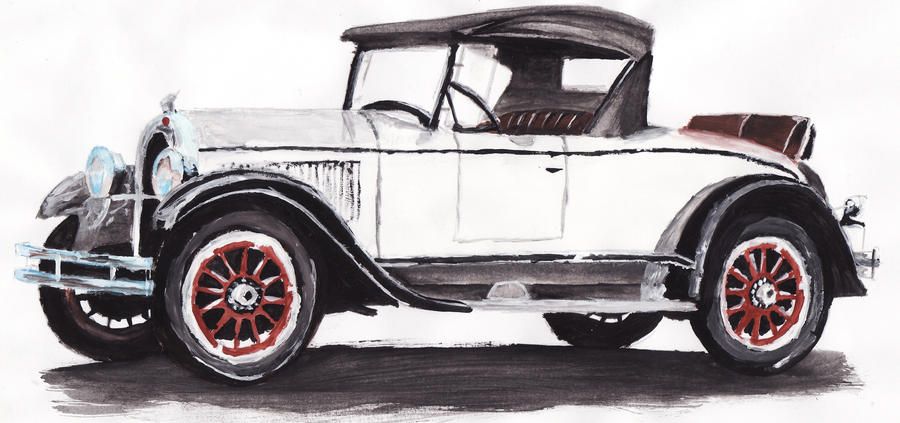
12. **Chrysler Model 70 (1924-1926)**The Chrysler Model 70 represents one of the earliest and most resounding successes for the fledgling Chrysler Corporation, which had only just emerged on the automotive scene. Introduced in 1924, this innovative vehicle quickly established itself as a formidable competitor, powered by a six-cylinder engine that could impressively propel it to speeds up to 70 miles per hour—a truly remarkable feat for its time. Crucially, like some of its more exclusive peers, the Model 70 also came equipped with hydraulic brakes, offering superior control and stopping power that set a new standard for safety and performance in its price bracket.
Aimed squarely at the burgeoning middle-class demographic, the Model 70 was designed to offer far more than just basic transportation. It boasted roomy interiors and delivered smooth, comfortable road handling, providing a driving experience that was genuinely enjoyable and refined. Chrysler’s rapid ascent during the 1920s can, in large part, be attributed to the success of this pivotal model. It provided a compelling blend of speed, safety, and comfort at a price point that made it attainable for a broader audience, solidifying Chrysler’s reputation for delivering advanced engineering and value, becoming a favorite among those keenly interested in the brand’s foundational success.
Car Model Information: 2024 Hyundai PALISADE Calligraphy Night Edition
Name: Model B-70/Model G-70/Series 60 & 70/62 & 72/65 & 75/66,70 & 77/CJ,66 & 70/CM & 70/CI/CO/CA&CB/C-6,CZ,C-1/C-7,C-8
Caption: 1926 Chrysler Six Model B-70
Related: DeSoto Six
Manufacturer: Chrysler
Production: 1924–1936
Class: full-size car
Engine: 180.2 CID
Abbr: on (1924)
Transmission: manual transmission
Wheelbase: 109 in
Length: 160 in
Successor: Chrysler Royal
Assembly: Highland Park Chrysler Plant,Highland Park, Michigan,Jefferson North Assembly#Jefferson Avenue Assembly,Detroit
BodyStyle: Brougham (car body)
Categories: Articles with short description, Cars introduced in 1924, Chrysler vehicles, Commons category link from Wikidata, Coupés
Summary: The Chrysler Six was a series of cars that were all installed with the Chrysler Straight Six when the company assumed operations of the Maxwell Automobile Company in 1924, and Chalmers Automobile Company in 1926. The Chrysler Six initially consisted of several Models, then Series designations that originally declared the approximate top speed each vehicle was able to consistently maintain, then each series number was incrementally updated every new model year, and each series was offered in several body style choices. The engines were technically advanced for their time and were entered in the 24 Hours of Le Mans for 1925, 1928 and 1929.
Get more information about: Chrysler Six
Buying a high-performing used car >>>
Brand: Chrysler Model: Model 70
Price: $39,658 Mileage: 22,633 mi.
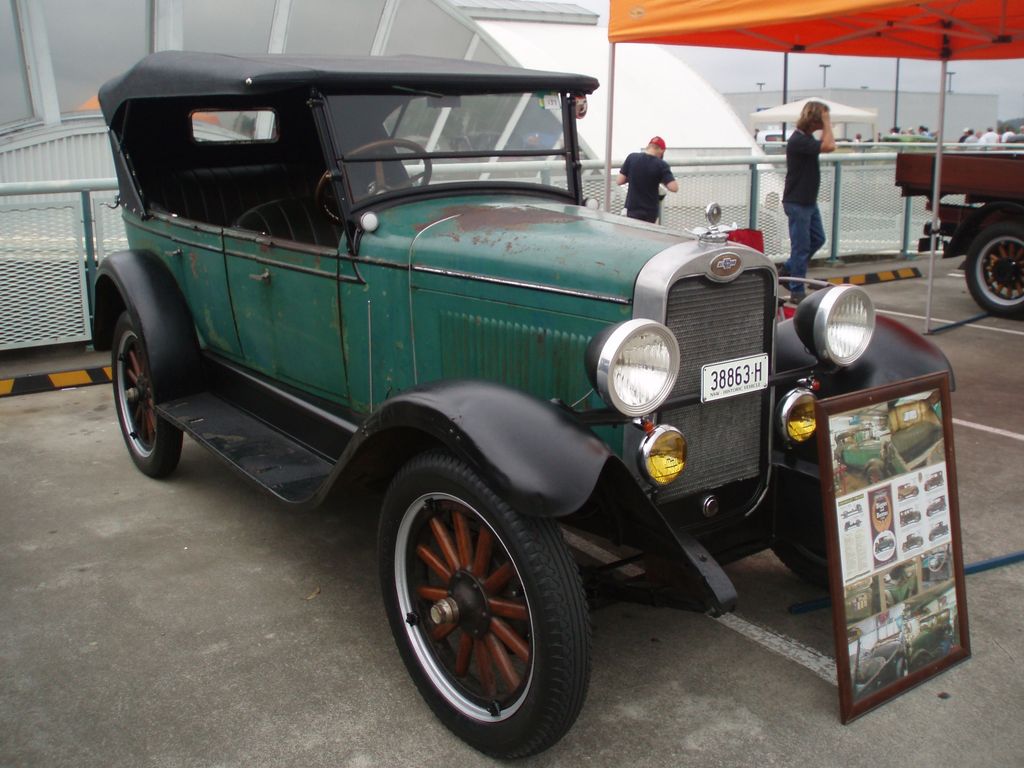
13. **Chevrolet Series AB National (1928)**As the 1920s drew to a close, Chevrolet made a significant move to challenge Ford’s dominance in the mass market with the introduction of the Series AB National in 1928. This model represented a crucial step forward for the brand, incorporating several key upgrades over its predecessors. It featured a 2.8-liter four-cylinder engine and notably improved suspension, both contributing to a noticeably more comfortable and refined driving experience for its price segment.
The Series AB National was thoughtfully designed with mass appeal in mind, offered in multiple body styles and strategically priced to attract a wide spectrum of customers. Its strategy proved incredibly successful, with over a million units sold, underscoring its immense popularity and effectiveness in reaching the everyday consumer. Buyers enthusiastically embraced its enhanced features and improved road feel, enabling Chevrolet to significantly close the competitive gap with Ford during a period of intense rivalry. Today, meticulously restored Series AB models are frequently showcased at classic car events, their historical importance rooted in both their widespread popularity and their undeniable practicality as vehicles for the everyday American.
Car Model Information: 2024 Hyundai PALISADE Calligraphy Night Edition
Name: Chevrolet Series AB National
Manufacturer: Chevrolet
ModelYears: 1928
Assembly: Oakland Assembly,North Tarrytown Assembly,Buffalo Assembly,Flint Truck Assembly,Norwood Assembly,St. Louis Truck Assembly,Leeds Assembly,Lakewood Assembly,Janesville Assembly Plant,Oshawa Truck Assembly,List of General Motors factories#Former factories,General Motors South Africa,List of General Motors factories#Former factories,List of General Motors factories#Former factories,Holden
Predecessor: Chevrolet Series AA Capitol
Successor: Chevrolet Series AC International
BodyStyle: 2-door roadster,2-door coupe,4-door sedan,4-door tourer
Layout: front engine rear wheel drive
Platform: GM A platform
Engine: 171 cuin
Abbr: on
Transmission: 3-speed manual
Wheelbase: 107 in
Length: 156 in
Weight: convert
Related: Oakland Six,Pontiac Six
Sp: us
Categories: All stub articles, Articles with short description, Cars introduced in 1928, Chevrolet trucks, Chevrolet vehicles
Summary: The Chevrolet Series AB National (or Chevrolet National) is an American vehicle manufactured by Chevrolet in 1928 to replace the 1927 Series AA Capitol. Documented production numbers show that 1,193,212 Series ABs were manufactured in a variety of body styles with 69,217 originating from the Oshawa factory alone. Chevrolet instituted serial number recorded on the front seat heel board on either the left or right side, using the listed numbers to designate the point of origin of the vehicle identified.
The Series AB National was joined in the marketplace with another alternative to the Ford Model A called the Plymouth Model Q.
Get more information about: Chevrolet Series AB National
Buying a high-performing used car >>>
Brand: Chevrolet Model: Series AB National
Price: $39,658 Mileage: 22,633 mi.
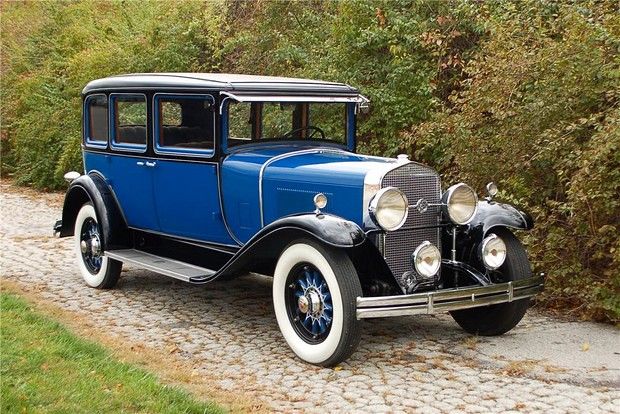
14. **LaSalle Series 303 (1927-1928)**In 1927, General Motors introduced the LaSalle Series 303, not as a direct competitor to Cadillac, but rather as a more youthful and stylish companion brand, strategically positioned to attract a new generation of affluent buyers. This innovative approach sought to bridge the gap between mass-market affordability and the pinnacle of luxury, offering a V8 engine and sleek body styling that immediately captured attention, particularly from younger professionals. The vehicle’s distinctive design was the masterful work of Harley Earl, whose pioneering vision would go on to influence decades of automotive styling across the industry.
Buyers were particularly drawn to the LaSalle because it offered a premium feel and sophisticated aesthetics at a more accessible price point than a full-fledged Cadillac. Available in a wide array of styles, including sporty convertibles and elegant coupes, the Series 303 democratized luxury, making it reachable for a broader, fashion-conscious audience. Its success was pivotal, not only for GM but for the industry at large, as it demonstrated the power of design-driven appeal and strategic market segmentation. The LaSalle Series 303 thus played a significant role in shaping automotive design trends and expanding the definition of luxury motoring.
Car Model Information: 2024 Hyundai PALISADE Calligraphy Night Edition
Name: LaSalle
Logo: Lasalle cars logo.png
LogoSize: 150
Producttype: Luxury car
Producedby: General Motors
Country: U.S.
Introduced: Alfred P. Sloan
Discontinued: [object Object]
Related: Cadillac
Markets: U.S.
Categories: 1920s cars, 1930s cars, 1940s cars, All articles with unsourced statements, Articles with short description
Summary: LaSalle was an American brand of luxury automobiles manufactured and marketed, as a separate brand, by General Motors’ Cadillac division from 1927 through 1940. Alfred P. Sloan, GM’s Chairman of the Board, developed the concept for four new GM marques – LaSalle, Marquette, Viking and Pontiac – paired with already established brands to fill price gaps he perceived in the General Motors product portfolio. Sloan created LaSalle as a companion marque for Cadillac. LaSalle automobiles were manufactured by Cadillac, but were priced lower than Cadillac-branded automobiles, were shorter, and were marketed as the second-most prestigious marque in the General Motors portfolio. LaSalles were titled as LaSalles, and not as Cadillacs. Like Cadillac – named after Antoine de la Mothe Cadillac – the LaSalle brand name was based on that of another French explorer, René-Robert Cavelier, Sieur de La Salle.
Get more information about: LaSalle (automobile)
Buying a high-performing used car >>>
Brand: LaSalle Model: Series 303
Price: $39,658 Mileage: 22,633 mi.
The automobiles of the 1920s were more than mere machines; they were vivid reflections of a decade roaring with transformation, innovation, and an undeniable zest for life. From the grand, custom-built masterpieces that redefined luxury to the accessible, reliable vehicles that put a nation on the move, each car told a unique story of progress. As we look back, it’s clear that these iconic vehicles did more than just transport people; they reshaped societies, created new industries, and sparked a lasting love affair with the open road. Their legacy lives on, a testament to an era where mechanical ingenuity met an insatiable desire for freedom, comfort, and the thrilling promise of what lay just around the next bend. These cars truly defined the Roaring Twenties, leaving an automotive heritage that continues to inspire awe and admiration.



